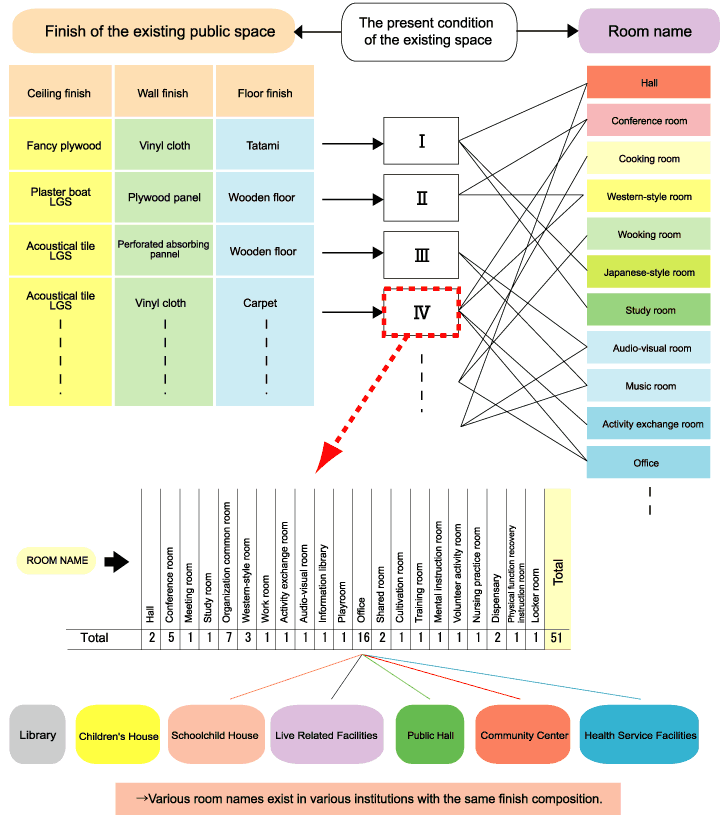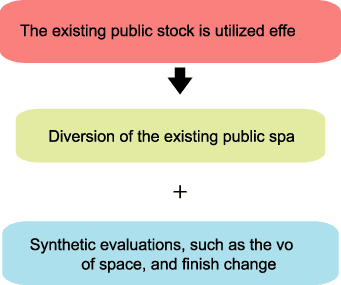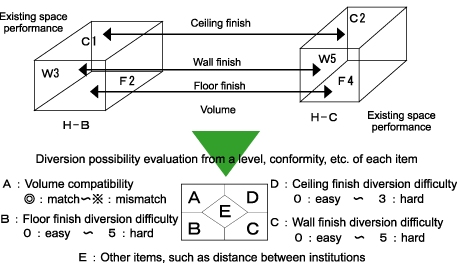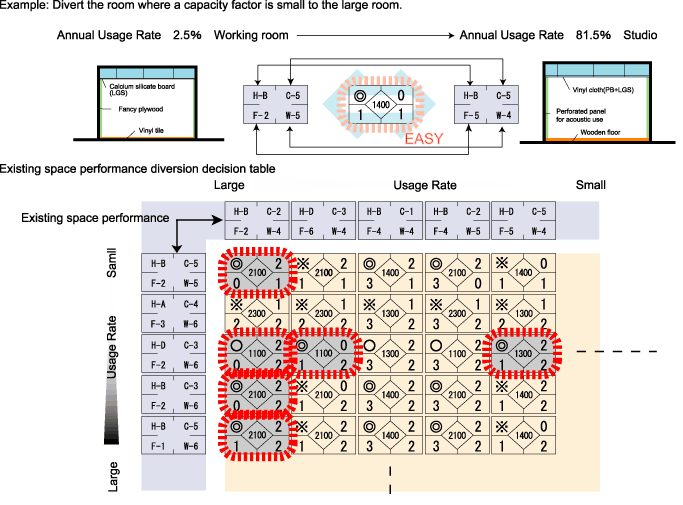Examination of Capacity for Using Public Buildings
1. Paradigm shift from ownership to use
Municipal governments have responded to new needs of local residents by "owning" new facilities, by building a new facility or by scrapping an old building to rebuild a new facility. However, it is clear that this method will not continue due to the financial conditions and limited resources. As a result, it is necessary to change the mindset to somehow "use" existing facilities. To do so, it is necessary to understand the possibility of how they can be used in detail.
2. Understand existing space to improve their use
Existing space of public facilities is organized in accordance with the purpose of their use. Each space is decided in accordance with how much space is necessary for purpose A or what function is necessary for purpose B, for example. Although the purpose can be interpreted as needs of local residents, it is not the case in which one space is provided for one purpose. If one space is created in such a manner to serve for multiple purposes, the use rate of the space will improve.
We examined all the public facilities in Tama City based on how existing space was created, especially its volume (size and height of the ceiling) and the design (inner design) to determine the trend of existing space. There were 51 rooms in similar volume and of the same design. The 51 rooms were given 21 different names in total to show the purpose of their rooms. In some cases, it is impossible to imagine the similarity of the rooms just from their names. On the other hand, rooms of the same name differ significantly in volume and design. Because general users can only assume the characteristics of the room from its name, the room name causes users to lose the opportunity to use the room. If there is a description where rooms with different names have the same volume and design, users can learn that they can be used for the same purpose. They can also be used for other purposes and the usage of the facility can be expected to improve.

3. Accumulate capacity data of existing space
One way of improving old buildings is maintenance, which is usually physical improvement and is based on the principle of restoration of status quo. As described earlier, it is necessary to improve the function to some degree and conventional maintenance is not sufficient enough. However, because there is a limitation to the improvement of functions, it is necessary to understand the capacity (various physical elements of space) of each space in relation to its use. Work required to change the existing space tends to be overly planned as the ideal state is sought. As a result, it requires so much money that the work ends up being relinquished. Increasing the capacity of existing space or quantification of the difference between existing space and new space will enable objective decision-making of space reorganization.



